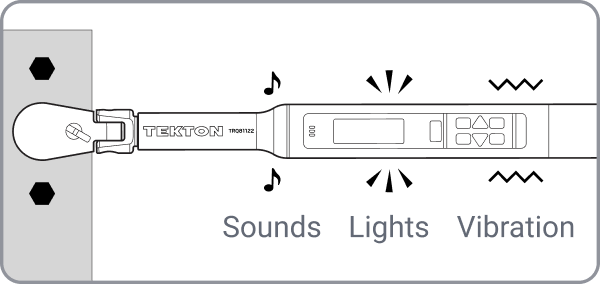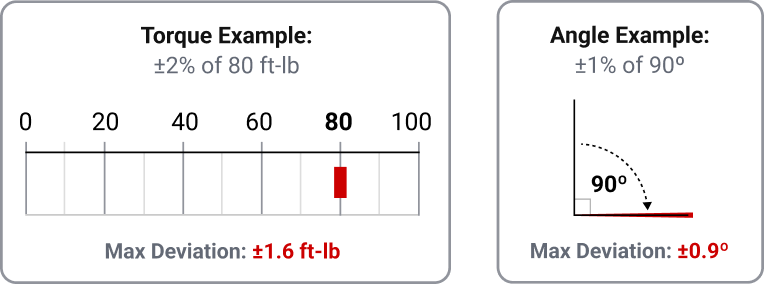Simple Controls and Straightforward Operation
- Fast to power-on, select a mode, and set your target
- Large, clearly-labeled buttons
- Backlit LCD screen with bold fonts and clear contrast
- Real-time sensory feedback from sequential lights, beep patterns, and handle vibration
- Dedicated button for quickly selecting saved presets
- Simple navigation menus with quick escape button
- 30-300 Ft lbs
- Measurements in Ft Lbs, Nm, In Lbs, Kg-m, Angle
Lights, Sounds, and Vibration Feedback
In addition to the LCD screen, the torque wrench also provides real-time sensory feedback. Lights change from yellow to green, beeps change to a continuous tone, and the handle vibrates when you hit your target value.

Sound and vibration can be turned off, but lights are always enabled.
10 Customizable Presets with Repetition Counters
You can save up to 10 presets and assign them to ordered slots. Each preset stores your measurement mode, target value, and unit. Optionally, you can set a number of repetitions (up to 99) to count each measurement in a series of fasteners.
Accurate Within ±2% for Torque and ±1% for Angle
The actual calibration accuracy will be stated on the certificate for your wrench. The maximum allowable deviation from the target will be within ±2% for torque and ±1% for angle, and it’s often on the lower end of the tolerance.

This torque wrench is calibrated to the ISO standard for torque. The ASME standard is more commonly used, but the ISO requirements are stricter in a few key ways:
- ISO requires the lowest marked value on the scale to be tested. ASME starts testing at 20% of the range, which is often higher than the lowest marked value.
- ISO requires clockwise and counterclockwise tests to match, whereas ASME allows counterclockwise to be less precise.
- ISO requires 5 readings for each set point, whereas ASME only requires 3 readings for each.


















